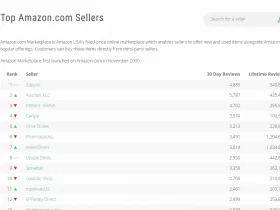In the complex landscape of business finances, Safe Harbor provisions stand out as a critical aspect for many companies, particularly small businesses. A 2022 study revealed that nearly 40% of small businesses opt for a Safe Harbor plan, and about 70% of companies making employer contributions choose a Safe Harbor 401(k) plan design.
As these numbers suggest, understanding and efficiently managing Safe Harbor costs is not just a regulatory necessity but a strategic advantage. This blog will explore 6 practical ways to minimize these costs, guiding businesses through a more financially sustainable approach.
Efficient Financial Planning and Budgeting
Effective financial management is key to minimizing Safe Harbor costs. This involves detailed budgeting, where businesses anticipate Safe Harbor-related expenses as part of their annual financial planning. An essential tool in this process is a Safe Harbor match calculator. This tool helps businesses accurately forecast the costs associated with employee contributions, allowing for more precise budget allocations.
By using a Safe Harbor match calculator, companies can better manage cash flows and prevent the financial strain that can occur from unplanned expenditures. Regular review and adjustment of these budgets in response to changing regulations and business circumstances are also essential to maintain cost efficiency.
Grasping Safe Harbor Regulations
Safe Harbor regulations, part of the 401(k) plan framework, are designed to ensure that retirement plans benefit all employees fairly. These rules, while offering certain tax advantages and compliance benefits, can also be a source of significant costs for businesses.
Staying abreast of these regulations is crucial. Changes or updates in the law can impact how businesses should allocate funds and structure their retirement plans. By thoroughly understanding these rules, businesses can avoid penalties and unnecessary expenditures that arise from non-compliance.
Utilizing Technology and Automation
Incorporating technology and automation in managing Safe Harbor plans can lead to significant cost reductions. Automated systems can streamline administrative processes, reducing the need for extensive manual labor and the risk of errors. Technology solutions can efficiently manage employee enrollments, contributions, and compliance reporting. This not only saves time but also cuts down on administrative costs, a notable part of Safe Harbor expenses.
The integration of advanced software systems specifically designed for retirement plan management is a game-changer. These platforms can automatically update contribution limits, adjust to regulatory changes, and provide real-time reporting, ensuring ongoing compliance. By investing in such technologies, businesses not only enhance the accuracy and efficiency of their retirement plan management but also position themselves to easily scale these systems as they grow. This adaptability is invaluable in a regulatory environment that is ever-evolving, ensuring that businesses remain compliant without incurring additional costs for frequent system upgrades or manual interventions.
Regular Compliance Audits and Employee Education
Conducting regular compliance audits is a critical strategy for minimizing Safe Harbor costs. These audits serve multiple purposes: they help businesses ensure they are adhering to the latest regulations, avoid costly penalties and fines associated with non-compliance, and identify areas where they might be overspending. By regularly reviewing and updating compliance strategies, companies can prevent financial setbacks and maintain the integrity of their retirement plans. This proactive approach not only keeps the business aligned with legal requirements but also reveals opportunities for cost savings and efficiency improvements.
Equally important is the role of employee education in managing Safe Harbor costs. Providing comprehensive education on Safe Harbor provisions empowers employees to make informed choices about their retirement plans. This awareness can significantly influence their contribution decisions, leading to a better alignment with both their personal financial goals and the company’s overall financial strategies.
An informed and engaged workforce is more likely to appreciate the benefits offered, potentially reducing turnover rates and the associated costs. Furthermore, employee engagement in a retirement planning strategy can foster a more positive workplace culture, contributing to overall job satisfaction and productivity.
Negotiating with Service Providers
A proactive approach to reducing Safe Harbor costs involves negotiating with service providers. This strategy includes thoroughly evaluating and comparing the fee structures of various providers. By negotiating more favorable terms or selecting a more cost-efficient provider, significant savings can be achieved. Businesses should actively seek to renegotiate terms or explore alternative providers to ensure the most economical arrangement for their Safe Harbor plans.
Analyzing Plan Design and Structure
The cost implications of a Safe Harbor plan are heavily influenced by its design and structure. Regular evaluation of the plan ensures alignment with the company’s financial objectives and employee needs. Modifying aspects of the plan, such as the matching formula or vesting schedule, can offer cost-saving opportunities. An optimally designed plan not only complies with regulations but also maximizes financial benefits for both the business and its employees.

Conclusion
Minimizing Safe Harbor costs demands a comprehensive approach encompassing regulation understanding, strategic financial planning, technology use, routine audits, employee involvement, effective negotiation, and thoughtful plan design. Implementing these strategies ensures compliance and cost-effectiveness of Safe Harbor plans, bolstering the business’s financial health and enhancing the retirement benefits for employees.













